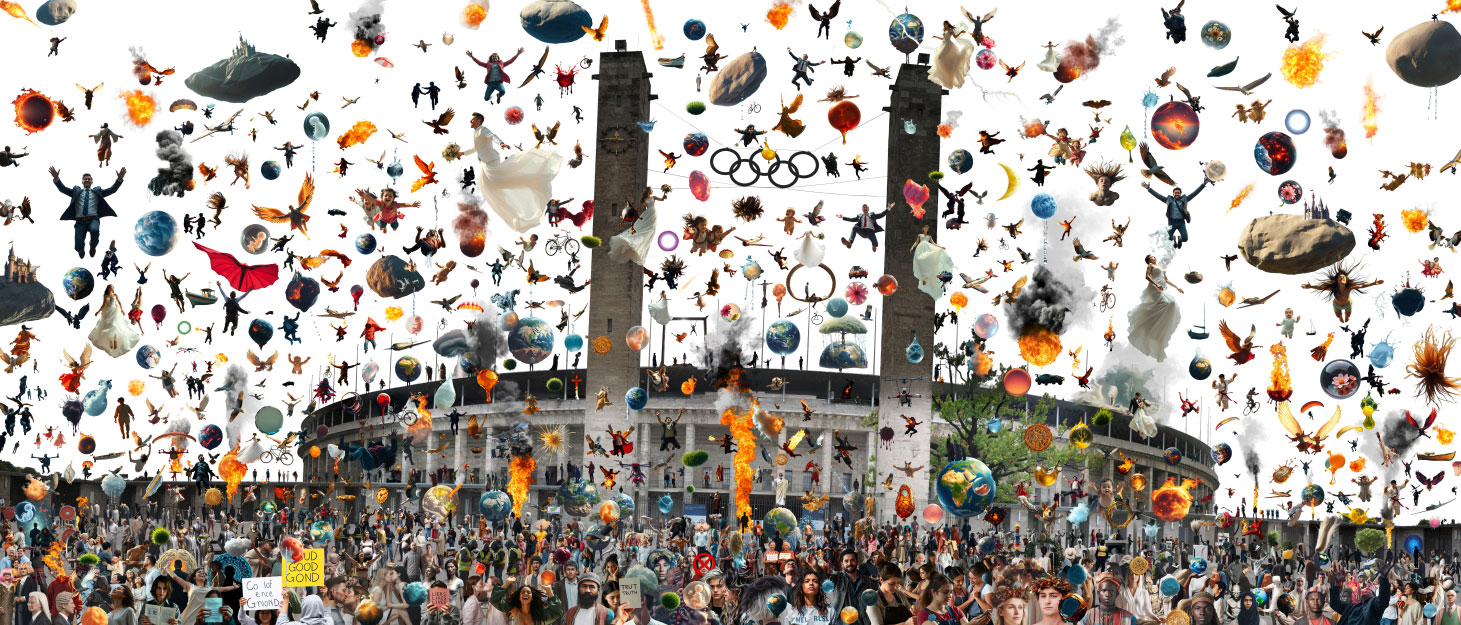
Berlin AI-Ching, After John Cage, Berlin/Germany, 4.67m x 2m, 2025
Berlin AI-Ching, After John Cage is a vast digital montage that fuses historical resonance with algorithmic futurism. Set against a Gigapan image of Berlin’s Olympic Stadium—a structure heavy with ideological weight—the work swarms with AI-generated figures, symbolic objects, and surreal interventions inspired by the 64 hexagrams of the I Ching. Each figure and object were created through artificial intelligence, embodying a divinatory principle, like fragments of fate raining through space and time.
The piece mirrors John Cage’s embrace of randomness, echoing his strategies of chance operation through a visual language of chaos and complexity. Cage’s own words resonate here: “I can’t understand why people are frightened of new ideas. I’m frightened of the old ones” (Cage, 1961). This work also relates to generative art, as theorist Philip Galanter notes, “generative art refers to any art practice where the artist uses a system… that is set into motion with some degree of autonomy” (Galanter, 2003, p. 4). Berlin AI-Ching embodies this principle, transforming Cage’s aleatoric ethos into a generative visual form. Explosions, floating castles, falling brides, burning globes, and birds in flight swirl around the stadium’s towers, confronting the viewer with a disorienting, sublime atmosphere. The crowd below—diverse, watchful, engaged—acts as witness to this collapse and rebirth of meaning.
Berlin AI-Ching invites viewers to question authorship, authority, and the elusive patterns of truth within an age of synthetic vision. Here, ancient Eastern philosophy intersects with AI and 21st-century machine learning. This tension between control and surrender, destiny and choice, speaks to our current cultural condition—caught between the mechanical and the mystical, the coded and the human.
References:
Cage, J. (1961). Silence: Lectures and Writings. Wesleyan University Press.
Galanter, P. (2003). “What is Generative Art? Complexity Theory as a Context for Art Theory.” International Conference on Generative Art, Milan, Italy.